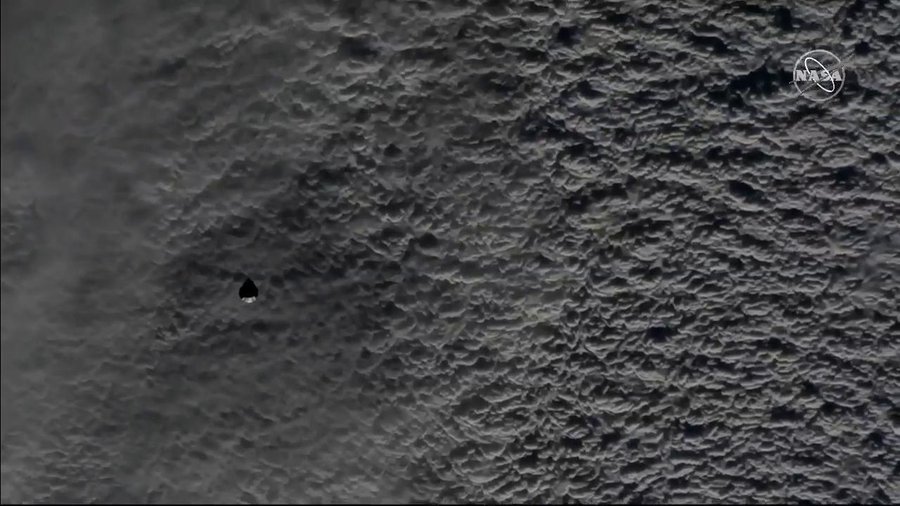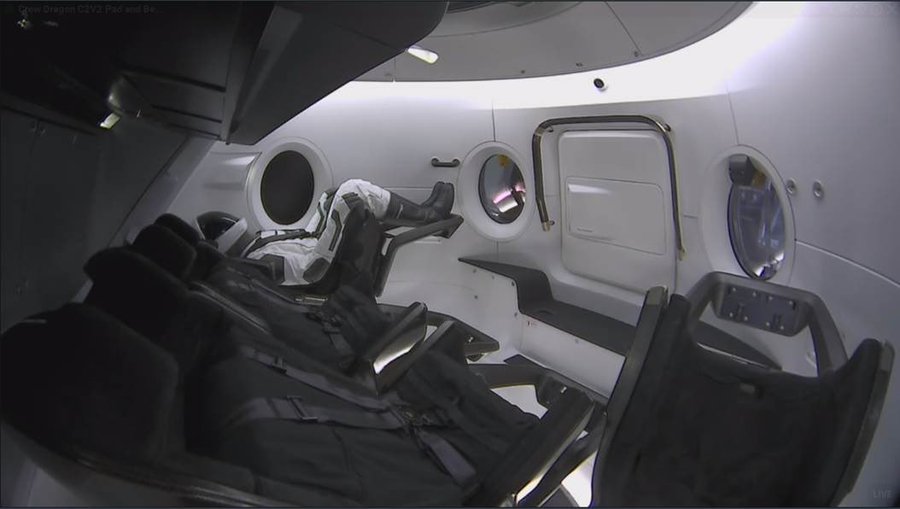NASA has announced the mission was a success, in the first flight test of a space system for humans built by a commercial firm.
For the first time, a space system built for humans by a commercial company has been successfully flight tested by NASA.
Elon Musk's SpaceX launched a rocket out of the Earth's atmosphere on Saturday, in a major step towards reviving America's human spaceflight programme.
After making 18 orbits of the Earth, the rocket's payload - a specially designed Crew Dragon spacecraft carrying a crash test dummy called Ripley - docked with the International Space Station on Sunday morning.
It attached to the ISS's Harmony module forward port via a process known as "soft capture", and used the station's new international docking adaptor for the first time since astronauts installed it in August 2016.
Before lift off, billionaire Musk tweeted a photo of the inside of the Crew Dragon capsule with a mannequin nicknamed Ripley strapped in it.
SpaceX said the spacesuit for Ripley, apparently a reference to the protagonist in the sci-fi movie Alien played by Sigourney Weaver, was embedded with sensors around its head, neck, and spine to monitor how a flight would feel for a human astronaut.
It is not the first time that billionaire Elon Musk's space business has sent a dummy into orbit.
Last year, in a test of the powerful Falcon Heavy rocket, Musk launched his own Tesla with a dummy at the wheel towards Mars - although the launch missed and the roadster is now headed towards the asteroid belt.
On Sunday morning, the International Space Station's three-member crew from Expedition 58 greeted the capsule, carrying 400 pounds of supplies and test equipment.
When the Expedition 58 crew members entered the Dragon capsule, they wore protective gear to avoid breathing particulate matter that may have shaken loose during the launch.
During its five-day stay, US astronaut Anne McClain and Canadian astronaut David Saint-Jacques will run tests and inspect Crew Dragon's cabin and check whether it is safe to carry humans.
Another form of the Dragon capsule docked with the ISS last April, carrying 5,800 pounds of supplies, including research material, crew supplies and launch and return hardware to the orbiting laboratory.
After the Dragon docks with the space station it will stay until 8 March while the human crew aboard the ISS remove its cargo - other than the dummy - and the Dragon crashes back down to the Atlantic Ocean.
At this point, a team of engineers and scientists will examine the Dragon capsule to see how safe it would be for humans to use.
NASA awarded SpaceX and Boeing Co $6.8bn (£5.2bn) to build competing rocket and capsule systems to launch astronauts into orbit from American soil for the first time since the US Space Shuttle was retired from service in 2011.
The Boeing and SpaceX launch systems are aimed at ending US reliance on Russian rockets for rides to the $100bn (£75.7bn) orbital research laboratory, which flies about 250 miles (402 km) above Earth, at about $80m (£60.6m) per ticket.







Comments
Post a Comment